
Christmas Shipping Deadline Sale--25% off!

Subtotal
$0
U.S. Shipping
FREE
Saved for Later
Shopping Cart

Christmas Shipping Deadline Sale--25% off!

Subtotal
$0
U.S. Shipping
FREE
Saved for Later
Sunflowers have famously been depicted by impressionist and post-impressionist artists Vincent van Gogh and Paul Gauguin. While these two giants in the art world were European, the flower has a distinctly American origin.
The sunflower was introduced to Europe by the Spanish around 1500. Before that, sunflowers were considered an important food crop and may have been one of the first plants domesticated in the Americas.
A Brief History of Sunflowers
Native Americans cultivated the sunflower from a wilder-looking flower into a single stalked flower laden with seeds of different hues. The first people of America used the plant for various purposes, from eating the seeds, using stalks for building, utilizing its medicinal aspects, and more.
When Europeans got hold of the sunflower, they originally bred the flower as a decorative item - not a food item. However, in a quirk of fate, the Russian Orthodox Church created dietary restrictions on foods made with fats and oils during Lent. The list of limitations did not include sunflower oil, and demand for the oil boomed. This led to the breeding of one of the most recognizable varieties of sunflowers created - the Mammoth Russian. You have seen these giant sunflowers before. They stand tall on impossibly thin stalks, their enormous heads heavy with seeds. They do not look like they should be able to stand up, yet when you try to break the stalk, you realize its strength. It is no wonder Native Americans built structures using the durable fibers of a sunflower’s stem. The plant is both beautiful and strong.
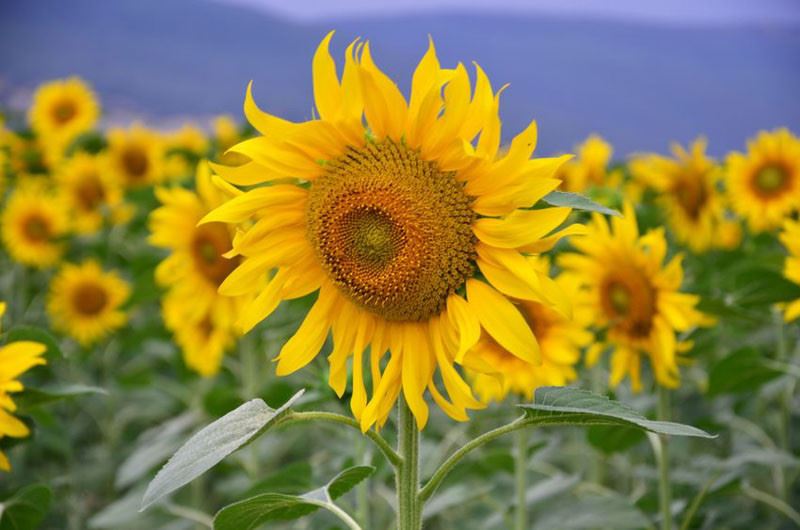
Russian Mammoth Sunflowers (photo credit the Gardenia website)
What Do Sunflowers Represent?
When you consider the strength and brilliance of a sunflower, know that you are not the first to recognize these characteristics. Some native peoples saw the sunflower as a symbol of courage and sent warriors to battle carrying sunflower cakes. At the same time, hunters braved the forest sprinkled in sunflower powder.
However, sunflowers represent different things to different people groups around the world. It is fascinating how so many cultures have adopted the sunflower and ascribed it meaning, even though the plant is not native to their area.
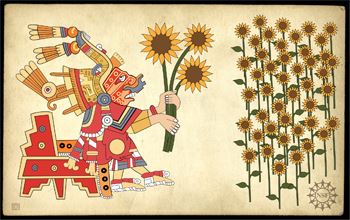
Aztec Sunflower Art
For example, the Chinese associate the sunflower with longevity. In Ukraine and Russia, sunflowers represent peace and optimism, and Ukraine adopted the flower as its national flower. Sunflowers were also sacred to the ancient Incan people as a representation of their sun god, Inti. In England, sunflowers represent gratitude, while they represent loyalty and devotion in Greece.
Though sunflowers have been assigned a variety of meanings, everything the sunflower represents is positive.
Sunflower Art Throughout History
While sunflowers were famously depicted during the impressionist period and later, other artists used sunflowers in their work - and even utilized the flower for pigmentation.
Native Americans created the earliest sunflower art. They used both a representation of the flower in art and processed sunflowers to create pigments. First peoples in America found ways to produce vibrant yellow and purple pigments from the flower and seeds. They used this pigmentation in pottery and other art.
Later, when Europeans planted sunflowers from American seeds, the flower found its way into paintings depicting everything from children to royalty. It was favored by the “sun kings” Charles I of England and Louis XIV of France. Louis XIV claimed the sunflower as his symbol. Many paintings of French royalty and those associated with royalty at the time feature sunflowers in clothing or as part of the work itself.
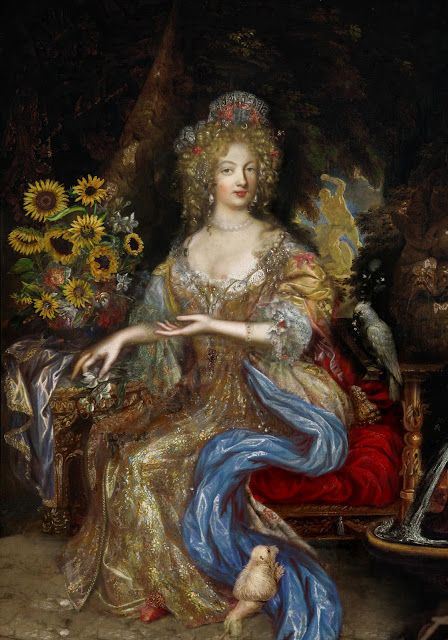
Catherine-Henriette Bellier, baroness de Beauvais, was a French courtier, best remembered as the first mistress of King Louis XIV of France. (Poitou, 1614 – 7 June 1689 in Arrou)
Between 1700 and 1800, sunflowers fell out of fashion as decorative plants and were mainly cultivated for seeds, fibers, dyes, and medicines.
However, with the manufacture of vibrant new pigments in the 1800s, artists like Vincent Van Gogh, Frederick William Frohawk, Jacob Maris, and George Leslie Dunlop jumped at the chance to paint the glorious flower once again.
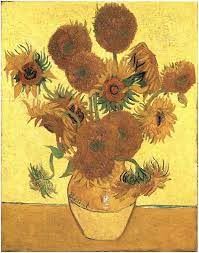
Sunflowers by Van Gogh (photo credit the Van Gogh Gallery)
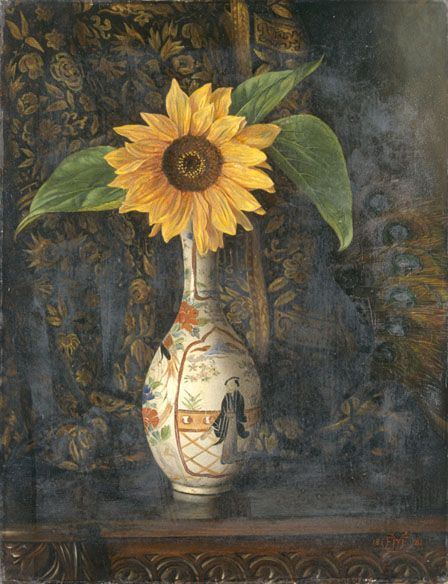
A Sunflower by Frederick William Frohawk (photo credit the National Museum Wales)
As technology has advanced, so has art. Sunflowers are depicted both in paintings and, once again, as representations of a better tomorrow.
This can be seen in recent art installations like Ai Weiwei’s Sunflower Seeds and Erin Hanson’s latest sunflower collection.
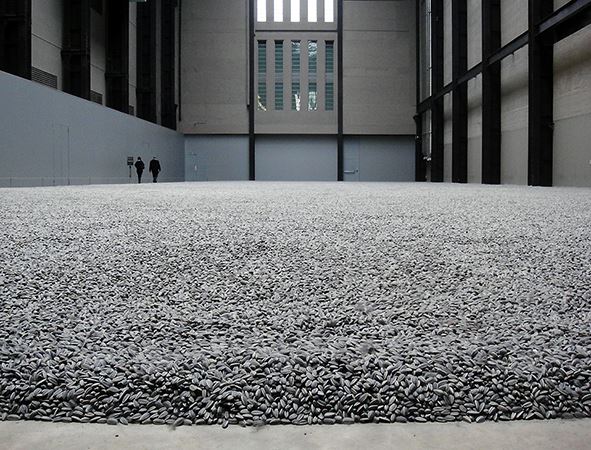
Kui Hua Zi (Sunflower Seeds), 2010 by Ai Weiwei (photo credit: Waldopepper)
Whether sunflowers are used for practical purposes or just for sheer beauty and vibrancy, their meaning in art and life has often been positive. If you love sunflowers and would like to enjoy their vibrant hues, be sure to explore Erin Hanson's paintings in The Sunflower Show on June 25th, 2022, at The Erin Hanson Gallery, McMinnville.
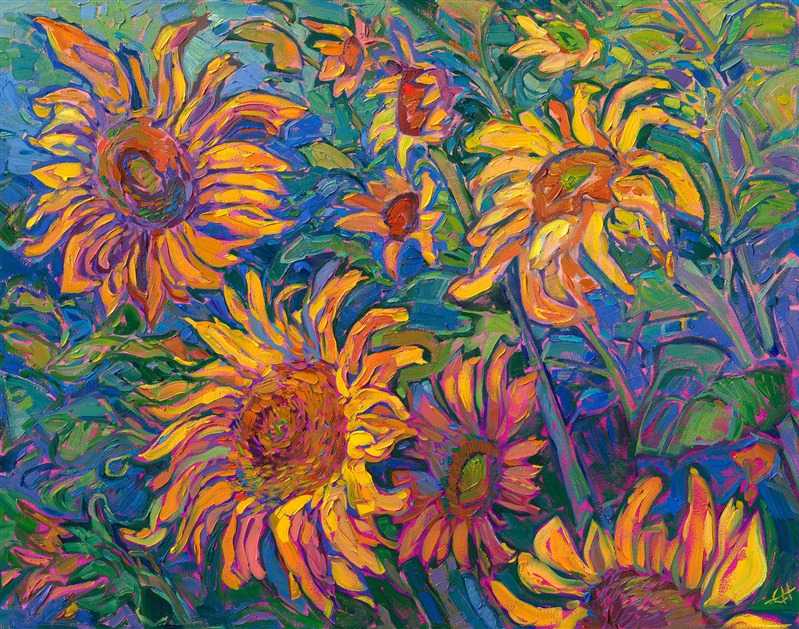
Hues of Sunflowers by Erin Hanson
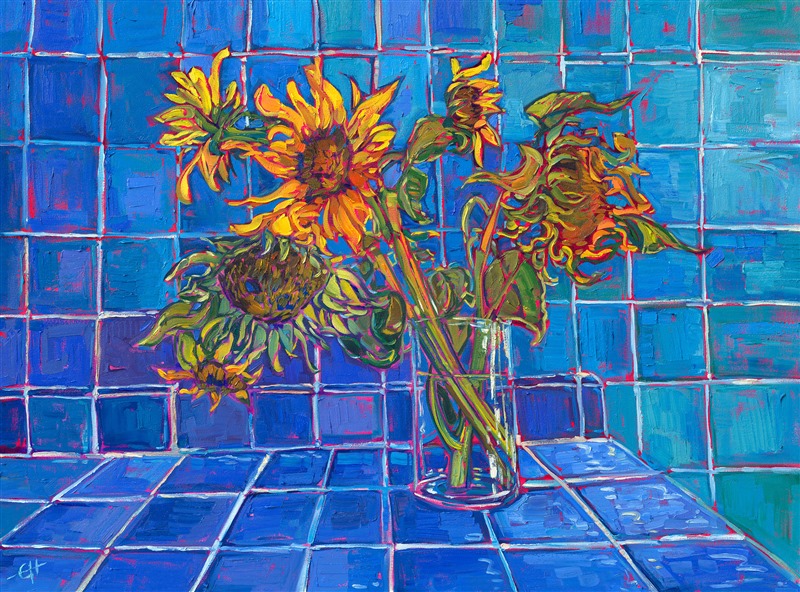
Blue Tiles and Sunflowers by Erin Hanson
Sources:
https://nuseed.com/eu/history-of-the-sunflower/
http://www.native-languages.org/legends-sunflower.htm
https://www.hgtv.com/outdoors/flowers-and-plants/flowers/sunflower-meaning-and-symbolism
https://www.uniguide.com/sunflower-meaning-symbolism/#What_does_a_sunflower_symbolize
https://kingslan.com/newsletters/sunflowermeaning.pdf
Discover the artist at the forefront of modern impressionism.
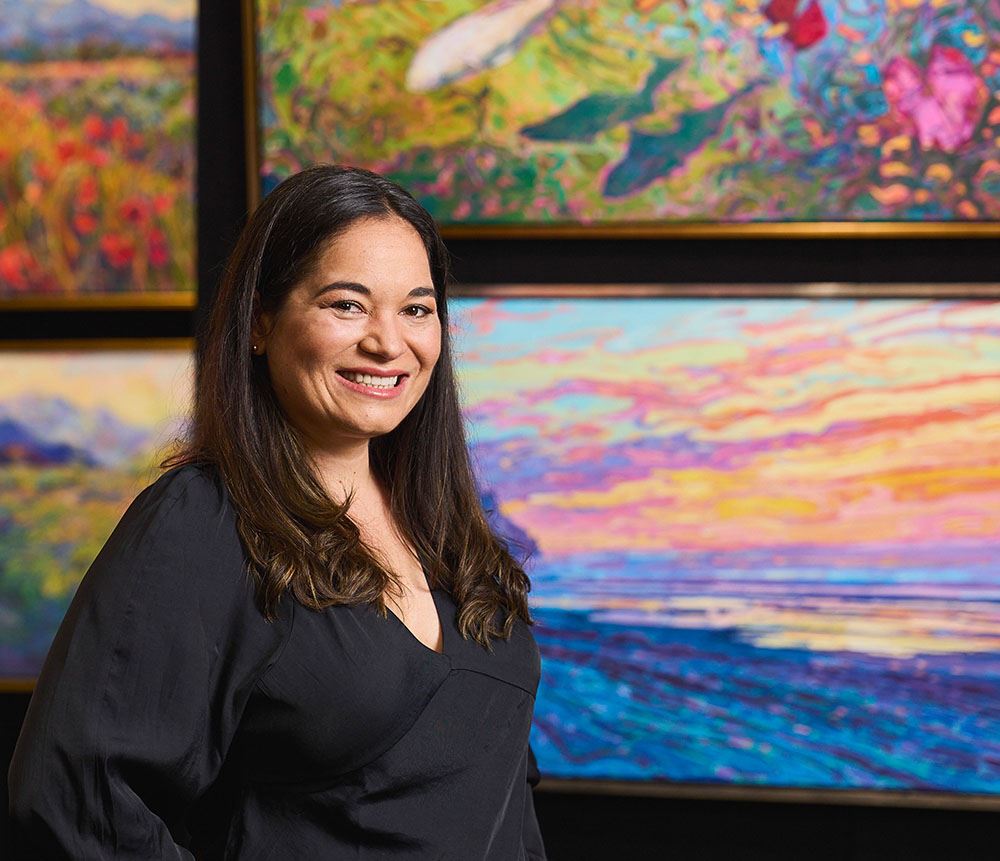
About Erin
ERIN HANSON has been painting in oils since she was 8 years old. As a teenager, she apprenticed at a mural studio where she worked on 40-foot-long paintings while selling art commissions on the side. After being told it was too hard to make a living as an artist, she got her degree in Bioengineering from UC Berkeley. Afterward, Erin became a rock climber at Red Rock Canyon, Nevada. Inspired by the colorful scenery she was climbing, she decided to return to her love of painting and create one new painting every week.
She has stuck to that decision, becoming one of the most prolific artists in history, with over 3,000 oil paintings sold to eager collectors. Erin Hanson’s style is known as "Open Impressionism" and is taught in art schools worldwide. With millions of followers, Hanson has become an iconic, driving force in the rebirth of impressionism, inspiring thousands of other artists to pick up the brush.